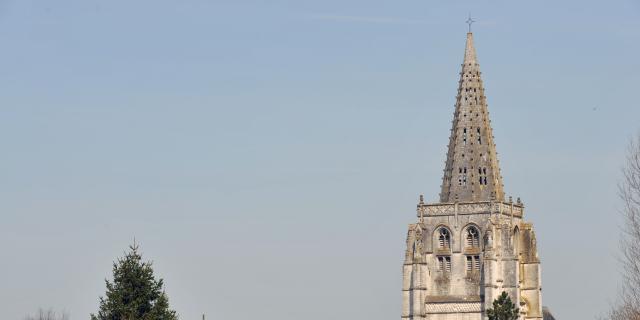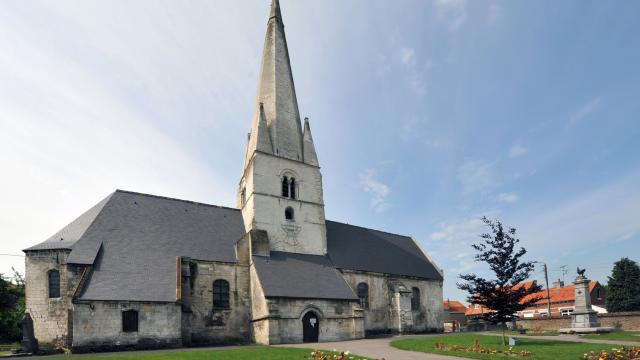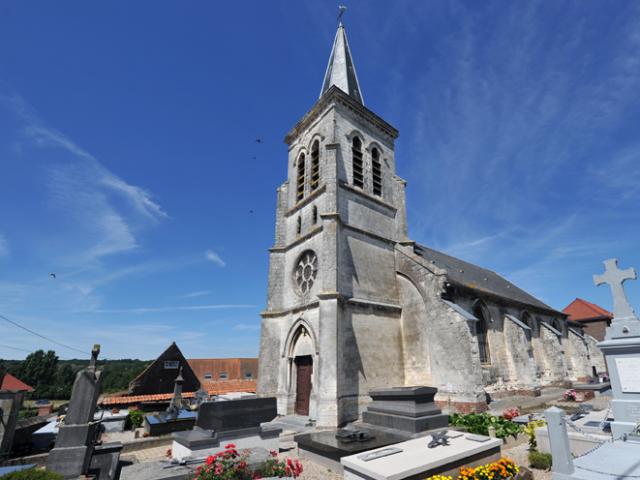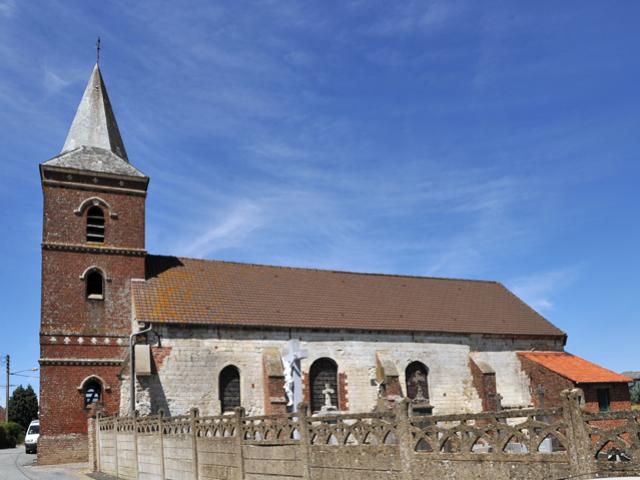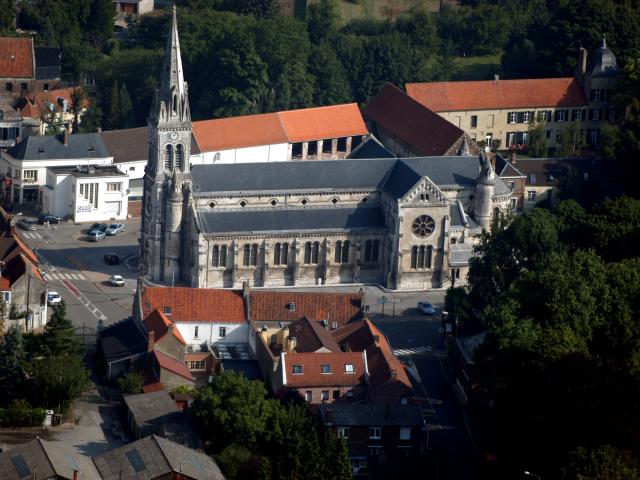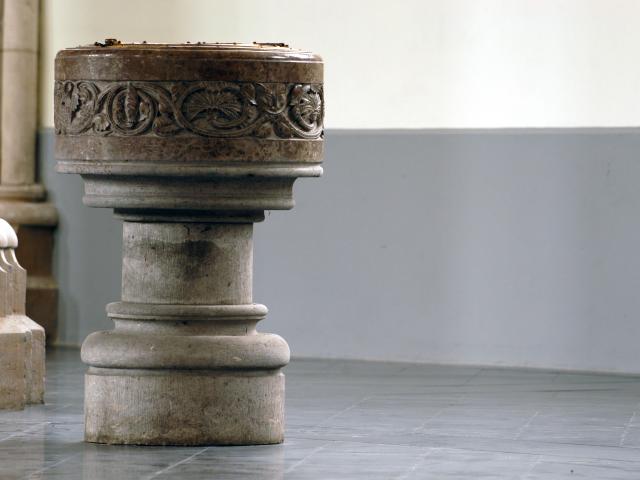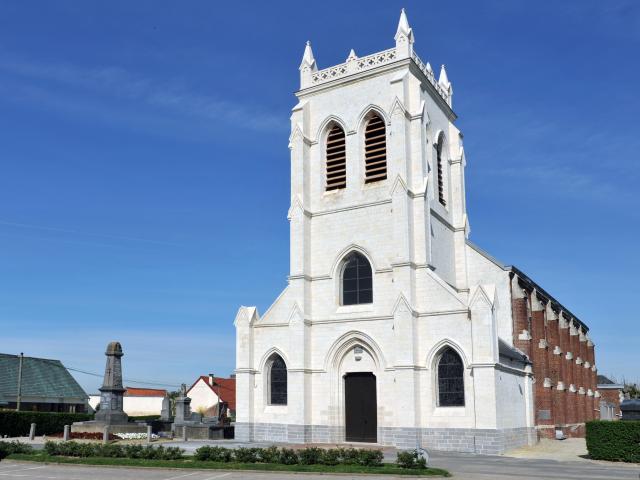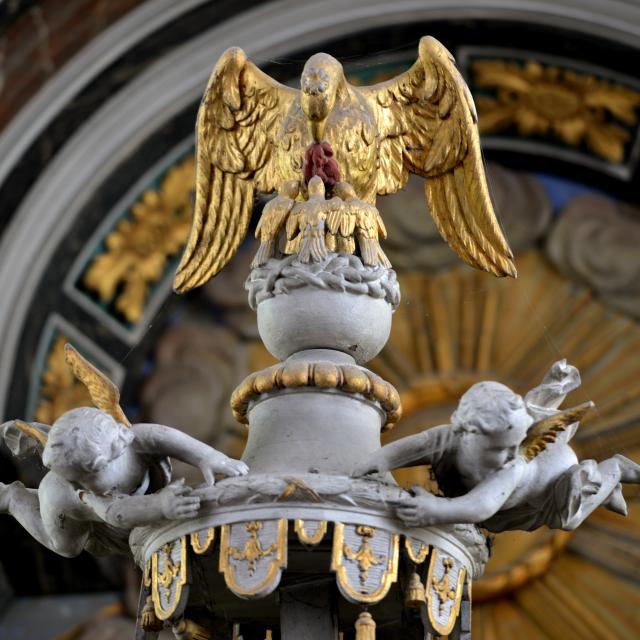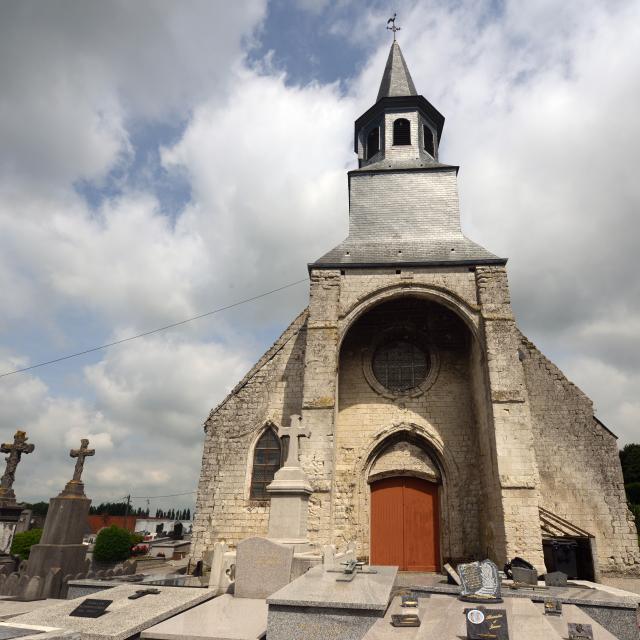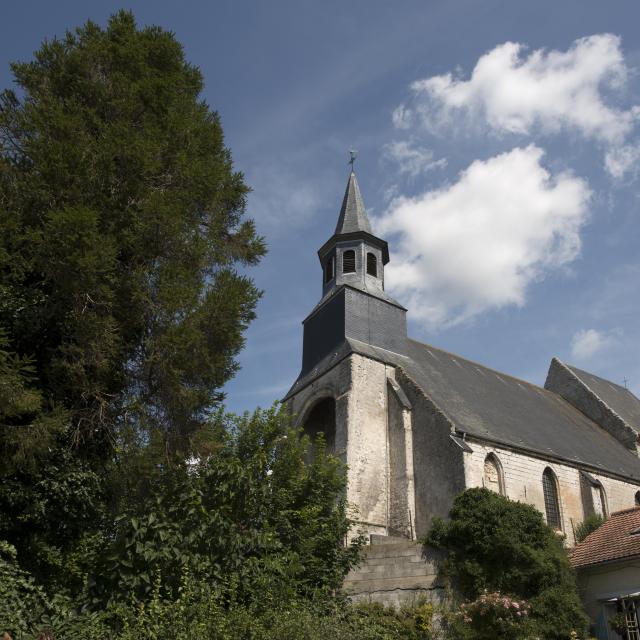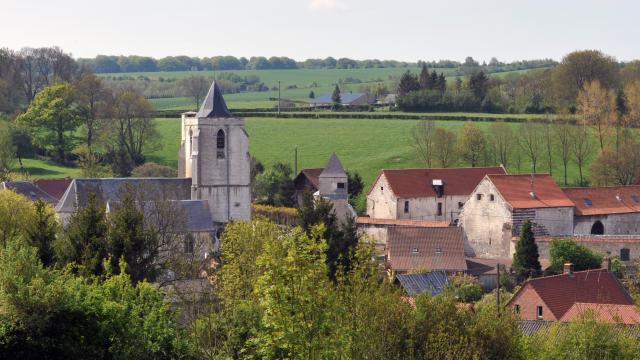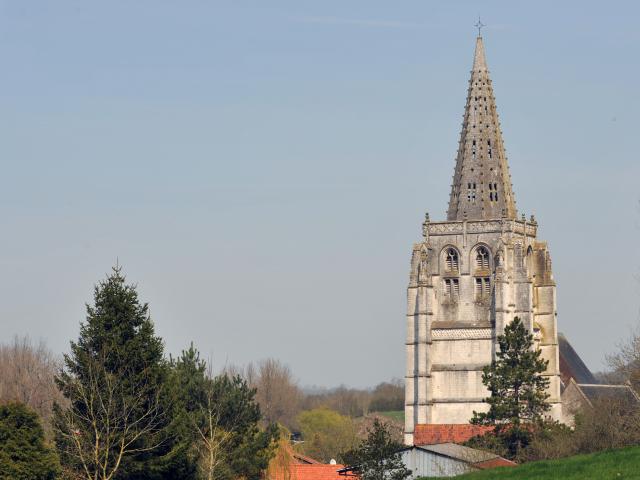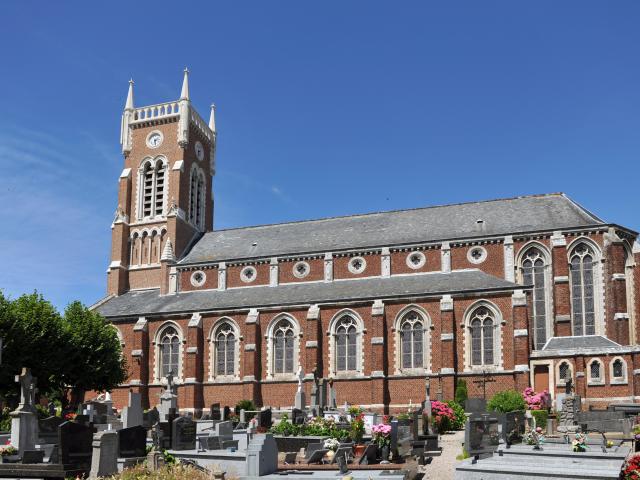Saint-Jacques d'Enquin-lez-Guinegatte church
We start with a rather unusual church, rebuilt in red brick in 1960 after it was destroyed by bombing during the Second World War. This post-war church stands out in the landscape, even though red brick is one of the emblematic materials of the Nord Pas-de-Calais region. Nevertheless, it has managed to preserve its bronze bell, cast by Beaudoin and Jussaud in 1776, and classified in 1943 as a Monument Historique movable object.
 Saint Jacques Church Enquin-lez-Guinegatte
Saint Jacques Church Enquin-lez-Guinegatte